The day changes somewhere over L.A. on the red eye from San Francisco to Mexico City. I notice the first changes to my body when I arrive at dawn. Subtle changes. I’m tired but happy, relaxed. An ancient past begins to tug at my sleeve, pulls me away from where I’ve been for the past year. Even with the constant din of the airport all around, everything proceeds at a slower pace. Yet, the time passes quickly. Soon I’m on a smaller plane. The hour flight to Oaxaca follows the path of an arrow with the apex near Puebla, or so I imagine.
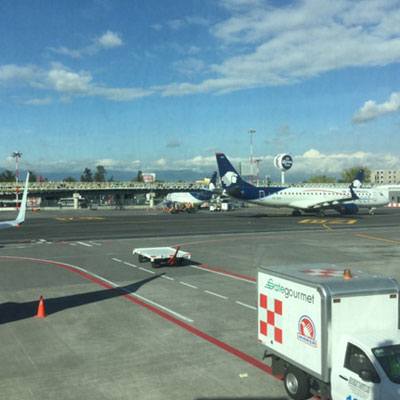
I ride the Collectivo into the central district. Unmistakable signs of the teacher’s strike surround me. I’ve learned to adjust. Some things, like the graffiti, I find strangely charming, different from home, horrible but beautiful. A woman told me on a flight last year, “In northern Mexico they work; in central Mexico they think; in southern Mexico they rest.” I’m ready for some rest.
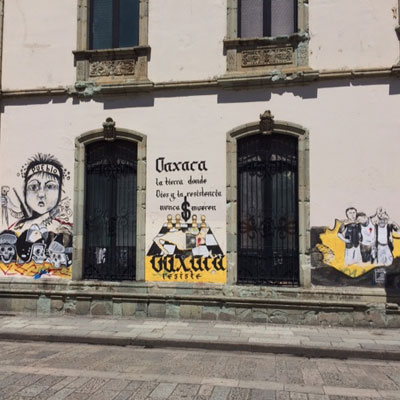
It isn’t dangerous. I avoid the city of tents in and around the Zocolo, the demonstrations when they occur. I enjoy the warmth of the sun, the birds, the piercing blue of the sky and the brilliant white of the clouds. I smile at the locals walking along and they smile back. It feels friendly. I know there is an undertone of tension. It doesn’t bother me.
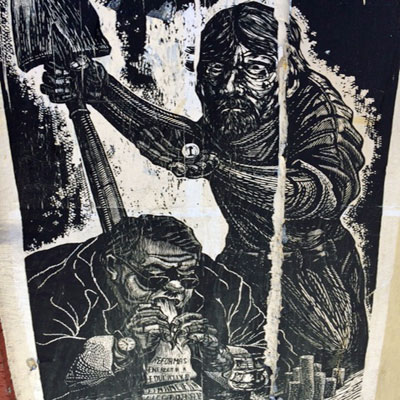
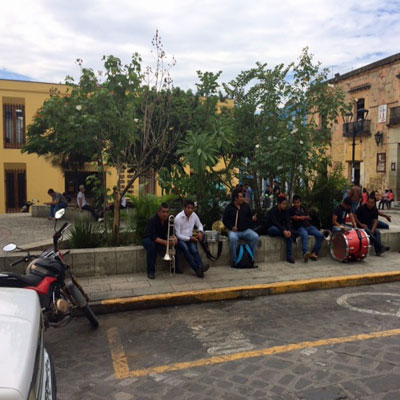
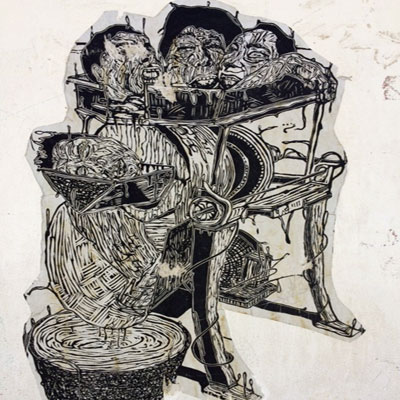
The parks in Oaxaca are where I feel most at home. Living in the country, trees and flowers and birds are my natural habitat.
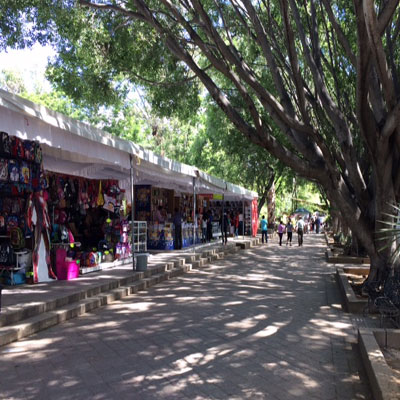
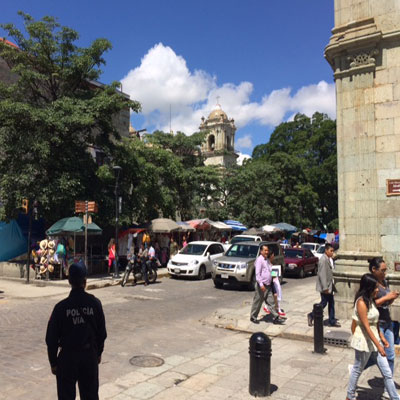
The streets of Oaxaca remind me that America is too often colorless in its urban landscape. Our cities and towns project grey and brown, black and white. We seldom see the artist’s palette that adorns the streets of Oaxaca. The great D. H. Lawrence lived here a hundred years ago when he wrote his wonderful description of local life, Mornings in Mexico, and finished his tragic novel, The Plumbed Serpent. Katherine Porter said of Lawrence’s novel that it captured all of Mexico:
All of Mexico that can be seen is here, evoked clearly with the fervor of things remembered out of impressions that filled the mind to bursting. There is no laborious building up of local color, but an immense and prodigal feeling for the background, for every minute detail seen with the eyes of a poet. He makes you a radiant gift of the place. It is no Rousseau-like jungle of patterned leaves and fruits half concealing impersonally savage beasts. The skies change, the lights and colors, the smells and feel of the air change with the time of day; the masses of the Indians move with purpose against this shifting landscape; the five chief characters live out a romantic drama of emotions, accompanied by all the commonplaces of every day, of dress, of food, of weather. A nationwide political and religious movement provides the framework for a picture that does not omit a leaf, a hanging fruit, an animal, a cloud, a mood, of the visible Mexico. Katherine Anne Porter: Collected Stories & Other Writings
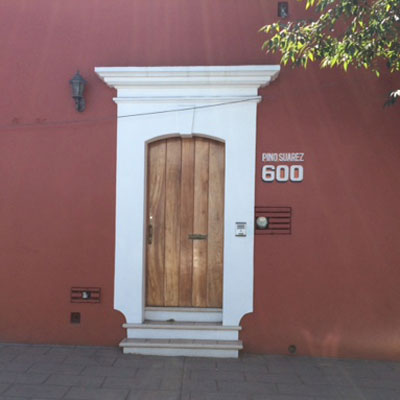
House where D.H. Lawrence lived while in Oaxaca
Oaxaca attracts writers and artists, poets and musicians, and why should it not? There are secrets here that transcend philosophy. In Avenue of Mysteries, John Irving’s central character, Juan Diego, feels secrets all around him.
“The past surrounded him like faces in a crowd. Among them, there was one he knew, but whose face was it?”
John Irving, Avenue of Mysteries (p. 33).
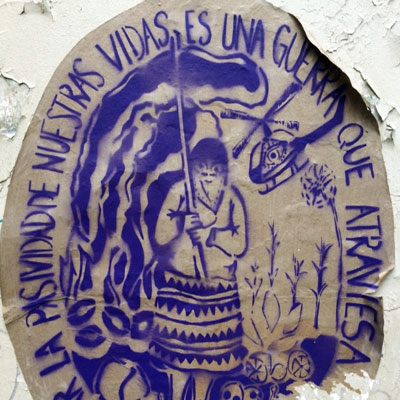
Mexico does not appeal to everyone. Richard Ford, an author of skill and vision, commented that Mexico looks good at a distance but that up close it doesn’t compare. In The Ultimate Good Luck, a story set in Oaxaca, he says:
The morning had developed a painful opaline glare, and out behind, Oaxaca had scaled back flat in the distance, a matte plate of jacarandas and palmeras and square-roofed casitas and the pale double corona of the Santo Domingo Cathedral, the clear dreamy Mexican air diminishing everything. Mexican cities at a distance, Quinn believed, gave you a different illusion from American cities. They looked like dream oases, whereas American cities looked like disassembled nightmares, but the facts were reversed and American cities were better places when you got there.
I disagree with Ford. Maybe I’m a misfit, an aberration, an eclectic and lost soul who has eyes but cannot see, who has ears but cannot hear. No. That isn’t true. There is something in Oaxaca that draws me back time after time.
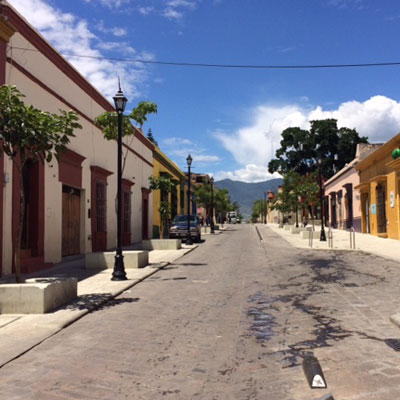
I return. That’s all that need be said.

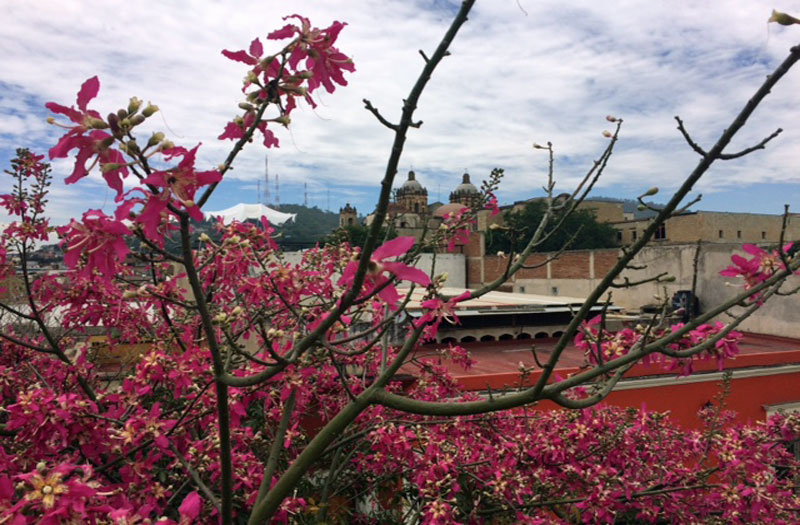
David, You make Oaxaca seem very attractive. John
Thanks, John. It is attractive,mquite beautiful.
David,
Another very well written description of Oaxaca.
Terry
David, your joy and love of Oaxaca is heart warming. Viva!
I am there with you – I can feel the warmth and the vibrant colours that lift the heart. You remind me of that strange feeling of peace and calm despite the contradiction of political unrest.
Jacque, that was so beautiful and is exactly how we feel. Thanks for your comment.